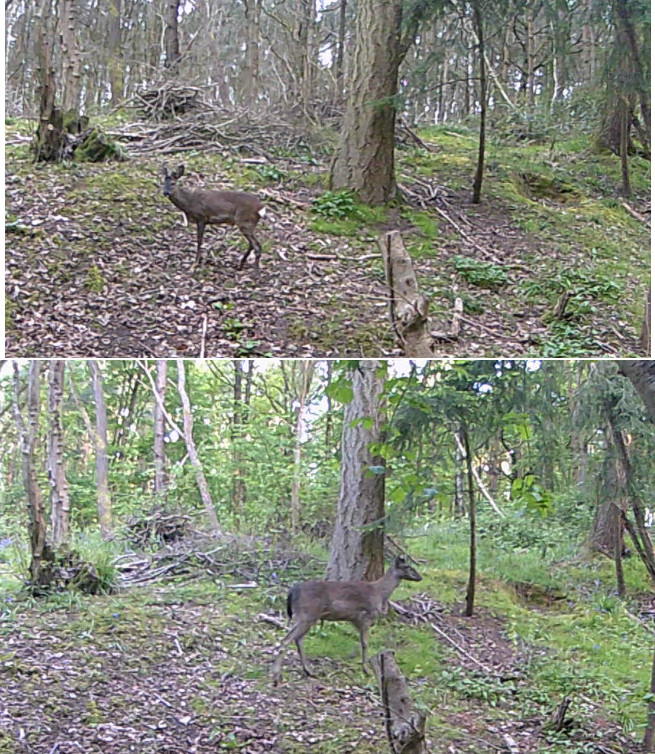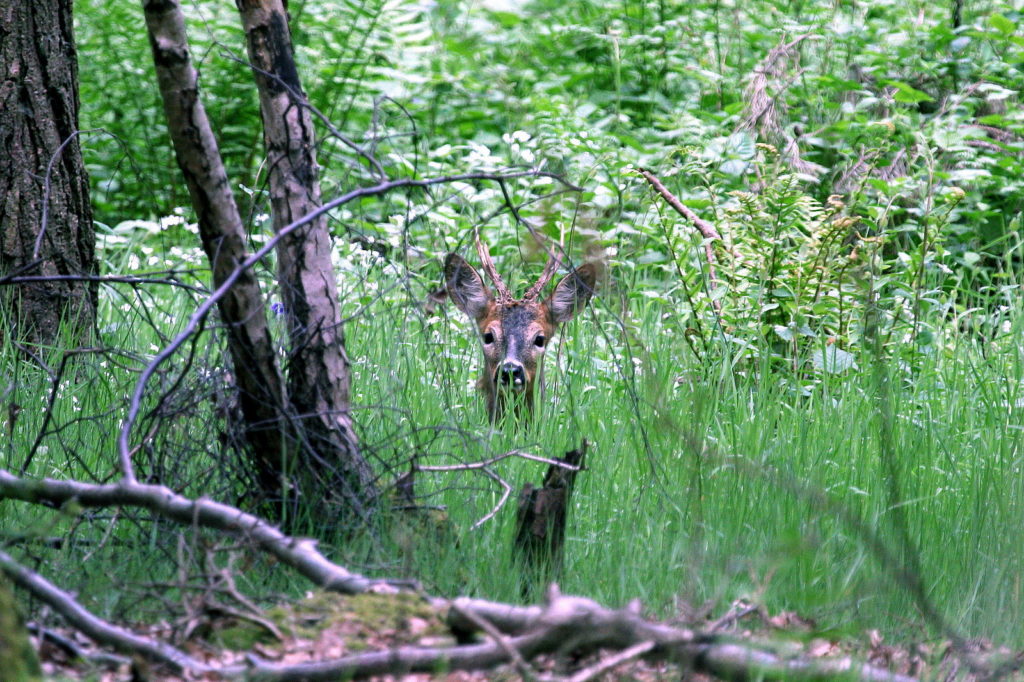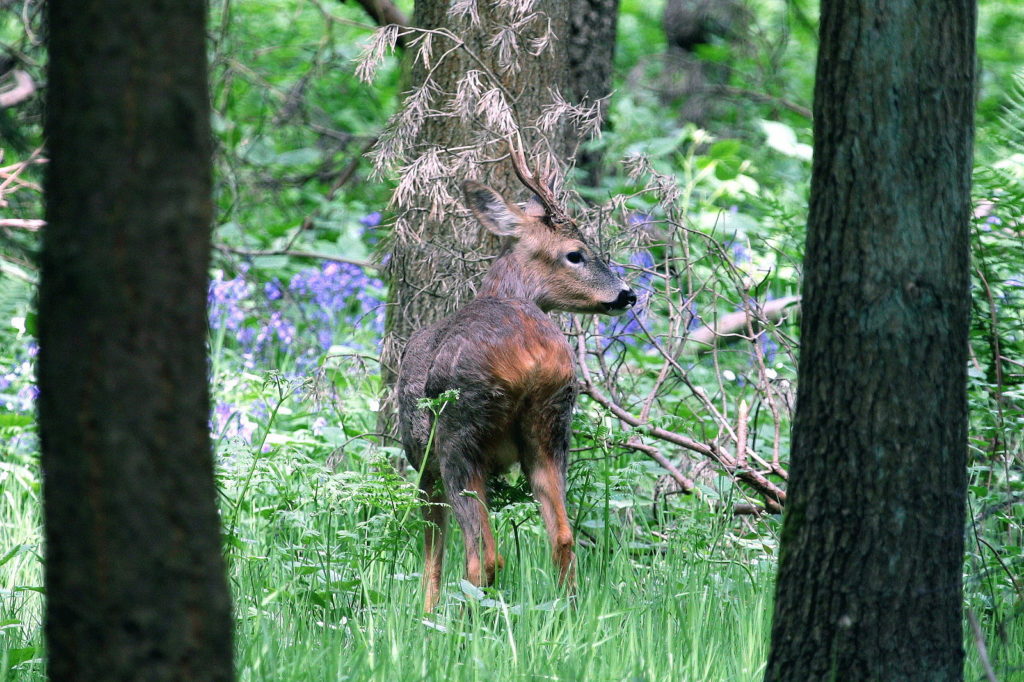I first became interested in the deer in Oakley Wood one day in 2013 when I was lucky enough to come across a roe deer during the day that I managed not to spook during a very slow and stealthy approach. I nearly always carried my camera and for some reason didn’t have my dog with me that day. It stayed long enough for me to get the best deer photographs I’ve taken. The photo I took that day was posted here. Here are some others I took at the time. Roe deer are mainly nocturnal and it’s only in daylight do you get to appreciate their lovely rich colours.
This got me interested: did we have a permanent population of deer in the wood, or was this a one-off? I’d glimpsed what I thought were muntjac on two or three occasions in the past but wasn’t sure – in the distance they can easily be confused with dogs. I had a chance to ask a wildlife “expert” on one of our organised walks, who thought the wood too small and suggested the one I’d seen was probably just passing through. I’m naturally sceptical, and curious, curious enough to buy a trail camera of my own and put it in the wood (with permission from WDC) to check this out. The camera showed clearly that deer are permanently in the wood, roe seen quite frequently but muntjac ever present. And it doesn’t matter much where in the wood the camera is, deer are there to be seen, although the pond tends to be the best place for wildlife in general for the obvious reason. How many we have is difficult to know; I imagine they roam throughout the wood, so the same ones are probably seen by the camera in different places, and multiple times in one night.
The trail camera was first put in the wood in the middle of 2016, and since then the only deer it’s captured are roe and muntjac. But while I was reviewing some footage in August this year I realised that what I though was “just” another roe was actually a fallow deer. I could be excused for not noticing the different colouring (the night-time colours are washed out) and the larger size (nothing to compare them with) but perhaps not for missing the black markings on their backsides and the fact they have a tail.
A composite clip of camera images from the same spot shows the differing sizes of a roe doe (top) and fallow doe (bottom):

So I went back through previous footage to see what I missed, and there was lots. That fallow doe first appeared on 7th May (which is the image above), and again on 17th May. Then nothing until 25th June when the doe showed up again, this time with a buck in tow. This pair revisited a few times until 14 July when a second buck joined them. From then on they seem to have taken up residence, appearing almost daily, and sometimes many times per day.
Here is a video I’ve put together. There was a lot of running and chasing between all three although the two bucks didn’t seem to be aggressive towards each other – perhaps because they are young, judging by their antlers. The last video sighting was one of the doe on 30 August. I embedded an image in the video to give an idea of relative size. It’s missing a roe deer which would have been useful, but it’s missing because the camera didn’t pick any up since the fallow deer arrived – noticeable by their absence. Perhaps they don’t mix.
Anyway, it’s good to see another species in the wood. I like to think it indicates that the wood is healthy.
Chris


